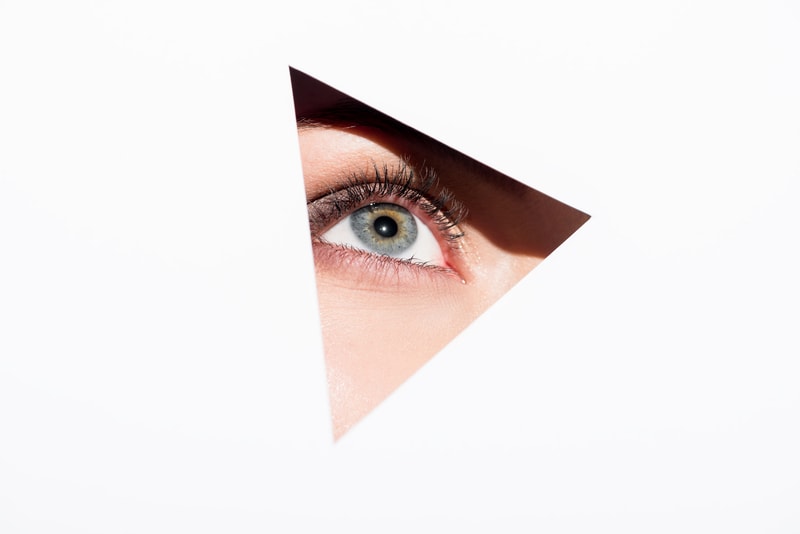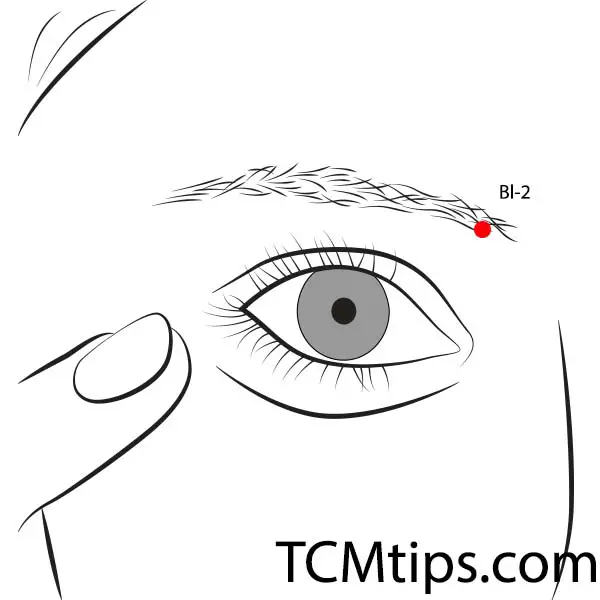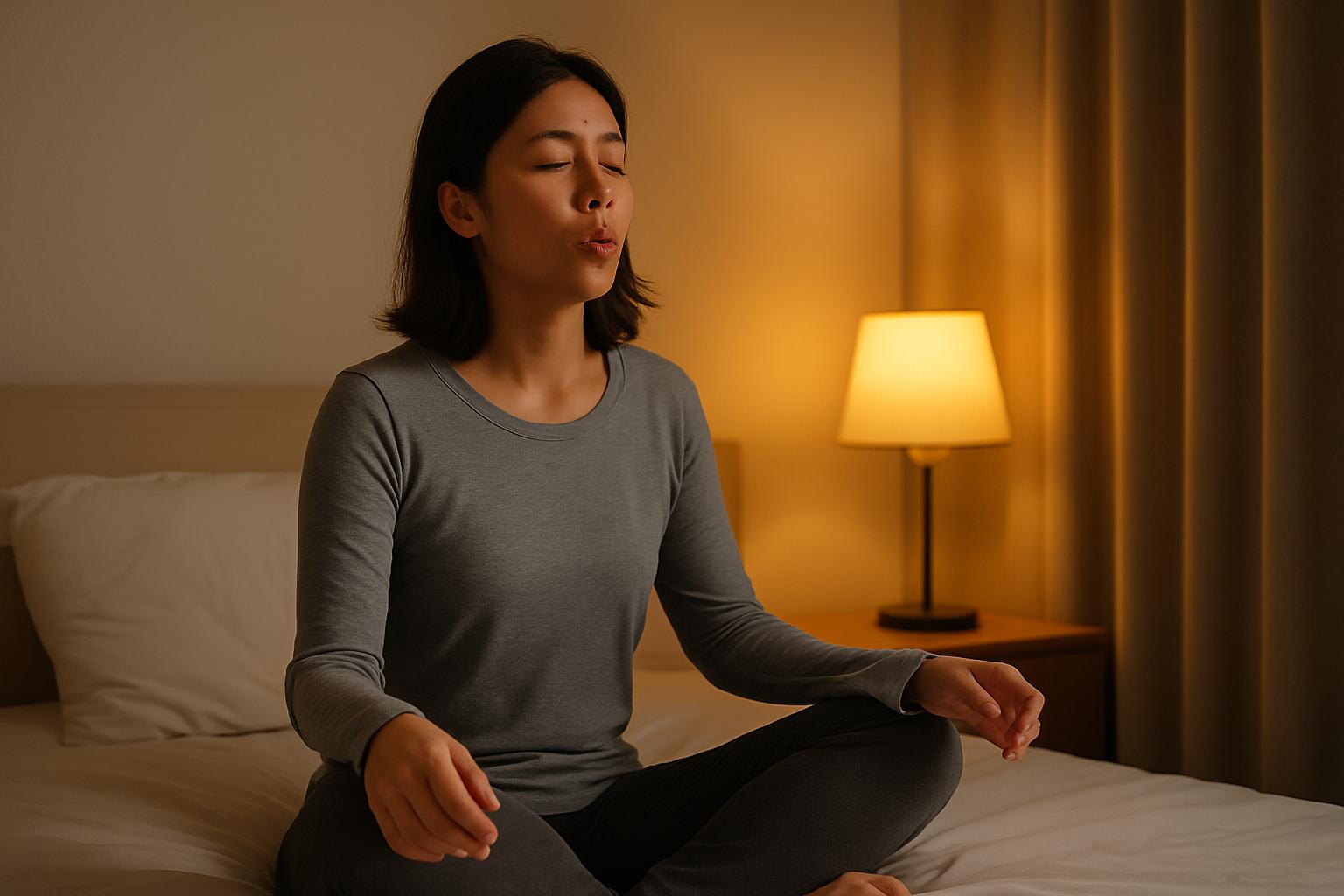Say Goodbye To Painful Dry Eyes & Say Hello To Hassle-free Comfort!

If you are one of the estimated 4.88 million individuals in America who suffer from dry eye symptoms, then you know this condition is no joke. Dry eye can result from a number of short-term conditions or exist as a chronic issue. Regardless of its cause, this condition causes a great amount of discomfort and severe irritation. Luckily, there are treatments for dry eyes, and I believe the best option to be the use of acupressure points for dry eyes.
Thanks to seasonal allergies, my battle with dry eyes has been ongoing from a young age. If my body’s reaction to the seasonal pollen did not dry out my eyes, then the allergy medications I took would. The pain and discomfort I experienced from my dry eyes took a lot of joy out of the seasons. After all, it’s hard to enjoy the beauty of spring when it is painful to keep your eyes open, and the redness caused by dry eyes doesn’t make for the best photos.
After trying a number of medications and eye drops recommended by doctors and friends, I decided it was time to take healing into my own hands. I did my research, and that’s when I discovered acupressure points for dry eyes. It seemed too good to be true, but I noticed a huge difference in just a few short treatments. This well-kept historical Chinese medicine treatment has done more to cure my dry eyes than any eye drop ever has, which is why I want to spread the word!
I have curated a list of frequently asked questions and acupressure points that are intended to help you learn more about treating your dry eyes with acupressure. So take a look and give these acupressure points for dry eyes a try. Trust me, these small efforts are worth it to enjoy life through clearer and more comfortable eyes.
Can Acupuncture Cure Dry Eyes?
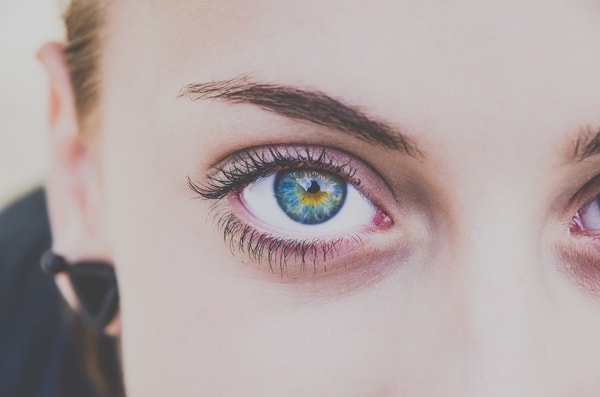
Many different aspects are part of a dry eye diagnosis, but there are many cases in which acupuncture can help to cure dry eyes.
Let’s break this down to build a better understanding of how acupuncture can cure or improve dry eyes. To start, it does help to have a diagnosis regarding the cause of your dry eye symptoms. Dry eyes may feel like a condition of their own, but they are more commonly the result of another condition, such as allergies, autoimmune diseases, pink eye, high eye pressure, excessive eye strain, and many other conditions. Knowing the root cause of your dry eye symptoms affords you the opportunity to treat the cause while you simultaneously treat the symptom with acupuncture, which gives you a better chance of accomplishing a lasting recovery.
However, I am completely aware that a diagnosis is often out of reach for many individuals. The good news is that even if you do not know what is causing your dry eyes, you can still treat them and possibly even cure them!
Acupressure and acupuncture for dry eyes are treatments that bolster your body’s natural functions, which help it heal itself in an effective and lasting manner. It is hard to know if your dry eyes can be cured by acupuncture or acupressure until you try it. Luckily, there are little to no negative side effects to this treatment method, so it is always worth a try!
If you are looking to find more ways to reduce your eye strain and visual stress, look into these other articles about acupressure points for eyes.
Why Is Acupressure For Dry Eyes More Effective Than Eye Drops?
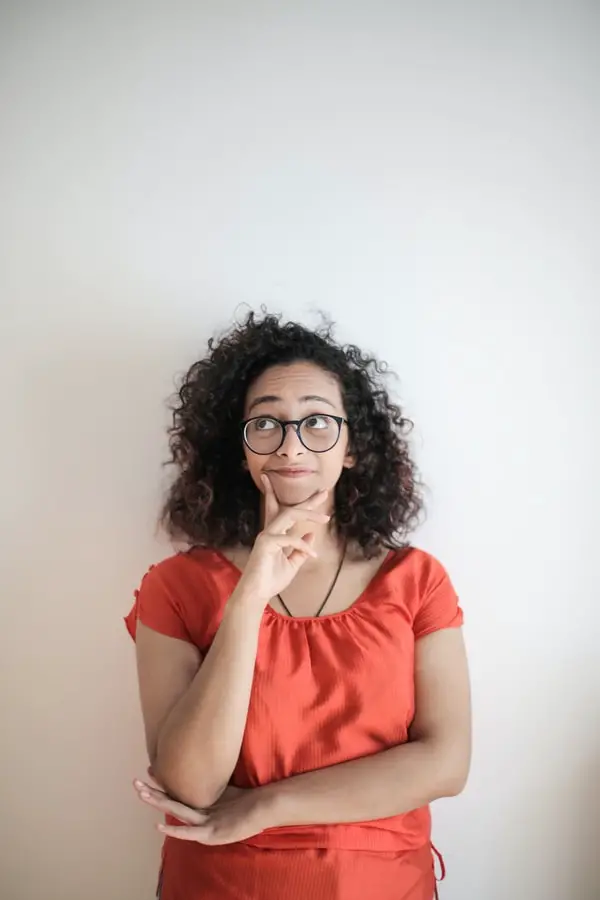
Eye drops provide immediate relief. However, that relief doesn’t last long. If you have ever used eye drops to treat your dry eyes, you know the feeling of dependence that develops through artificial tears. Depending on how bad your dry eyes are, you may reach the maximum recommended daily dosage of eye drops before the day is even over.
In short, eye drops are more like a bandaid for this condition when what you really need is a cure. The most sustainable solution to dry eyes is increasing tear quantity and quality, which is something only your body can do.
Acupressure and acupuncture for eyes are two treatments that focus on your body’s natural ability to treat your dry eyes by stimulating and healing areas of the body that are closely related to tear production. Multiple studies have supported the benefits of acupressure for dry eyes. One such study even noted that acupressure treatments for dry eyes were effective in improving the quantity and quality of tears produced by 81% of dry eye sufferers in a controlled trial. This study also suggested that regular acupressure treatment can improve dry eye symptoms for a minimum of three months since participants were still healed from their dry eye symptoms when the study ended three months later.
Here Are The Top 6 Proven Acupressure Points For Dry Eyes
All of these points exist around the eye’s orbits, which are the bone structures surrounding the eyes and holding associated nerve points. You should be able to safely treat each acupressure point by yourself without touching or damaging your eyes in any way. However, If you are seeking acupuncture for dry eyes, it is best to consult a professional acupuncture practitioner to prevent any accidental damage to such a sensitive area of the face.
1. Acupoint: Bl-1 (Other Names: Urinary Bladder-1/Jing Ming/Bright Eyes)
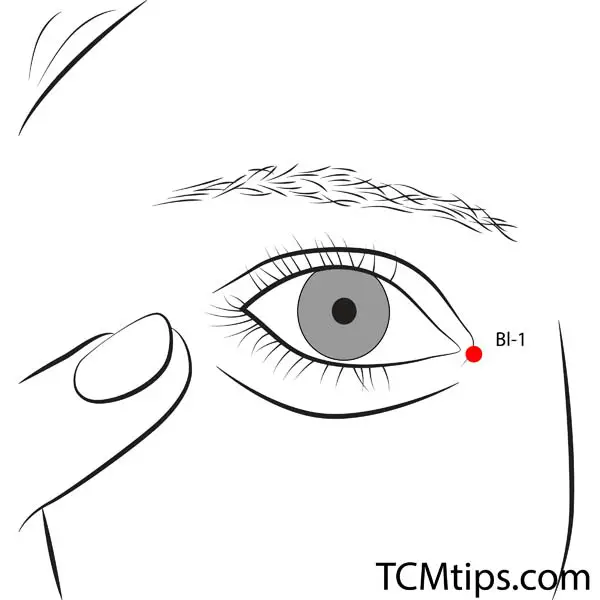
It may seem odd that acupressure points for dry eye are on the bladder channel, but it actually makes a lot of sense. This channel is associated with curing musculoskeletal problems and any associated pain, so when you treat the Bl-1 point, you are helping regulate the musculoskeletal system around the eyes. This point is so effective in treating eye discomfort and improving eye functions, like tear production, that it is commonly called the bright eyes point.
You can locate the Bl-1 point by finding the inner corner of your eye. You don’t want to touch your eye or the mucus membranes of your eyelids, so you should focus the pressure of your finger or acupressure tool towards the bony area instead of the softer area at this inner point of the eye. Maintain gentle pressure for a few seconds, and you can add a slight rubbing motion if it soothes you.
Together with GV 16 acupuncture point, they are the favorite acupoints for any office worker.
2. Acupoint: Bl-2 (Other Names: Urinary Bladder-2/Zan Zhu/Gathered Bamboo)
Bl-2 is another bladder channel point associated directly with the eyes. When treated, this point has the power to improve visual disturbances, like those caused by dry eyes.
The Bl-2 point is very easy to find when you are in need of immediate dry eye relief. To locate this acupressure point for dry eyes, you simply need to find the inner end of your eyebrows. You should apply pressure on the curved part of the bone that slopes toward the eyes at that point. After a short application of pressure or gentle rubbing, you should feel warmth and pain relief in your eyes.
This acupoint is also one of the 13 acupressure points for eye strain.
3. Acupoint: EM-3 (Other Names: Yu Yao)
This point continues to circle the eye and provides relief to eye complications related to strain or stress. Excess stress on the eyes and emotional stress have both been linked to an increase in tear production complications, making this point important for the reduction of stress that may contribute to your dry eyes.
To find this acupuncture point for dry eyes, you can continue to move your fingers up and around your eyes using your eyebrows as a guide. Stop your finger in the middle of your eyebrow, in line with your pupil when you are looking straight, and you should feel a mild depression. This is the point at which you should apply gentle pressure to reduce eye stress and strain related to dry eyes.
4. Acupoint: TE-23 (Other Names: Triple Energizer-23/Si Zhu Kong/Silken Bamboo Hollow)
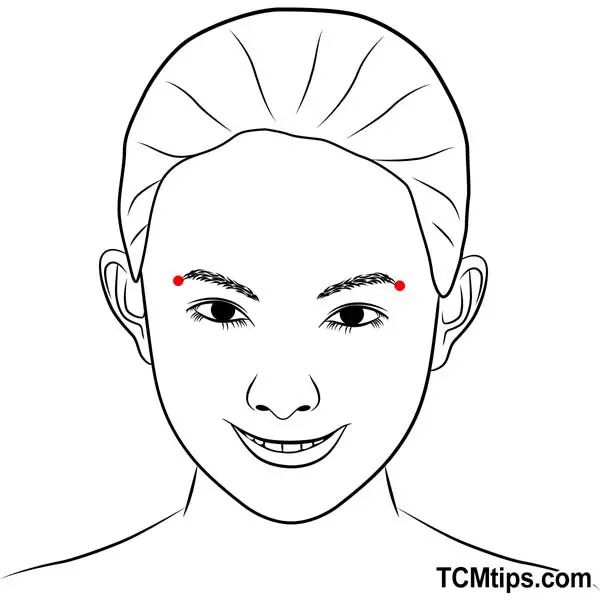
This acupuncture point for dry eyes is part of the triple energizer channel. This channel actually ends at the eye instead of starting there and is known to help muscle paralysis. This is important for dry eyes because any paralysis or dysfunction of the muscles around the eyes can impede tear production.
To activate this point, you will have to find it at the end of each eyebrow, closest to the outer edge of your face. You will feel a slight depression which is where you should apply gentle pressure until you feel slight warmth and relaxation.
5. Acupoint: GB-1 (Other Names: Gallbladder-1/Tong Zi Liao/Pupil Crevice)
The gallbladder channel is helpful in curing dry eyes since there is believed to be a link between some of the intestines and the quality of one’s vision. The Gb-1 point’s close proximity to the eyes does more than just benefit the gallbladder. It also reduces the visual strain that is associated with dry eyes.
To locate the Gb-1 acupressure point for dry eyes in the outer corner of the eye sockets. This area is softer, and you can actually feel the facial bones come to a curve or corner in this area, which is where you should apply gentle pressure. There is soft tissue closer to the eye around this point, so be careful not to apply too much pressure to any soft areas.
TCM practitioners also commonly use this acupoint in acupuncture for jaw pain.
6. Acupoint: ST-2 (Other Names: Stomach-2/Si Bai/Four Whites)
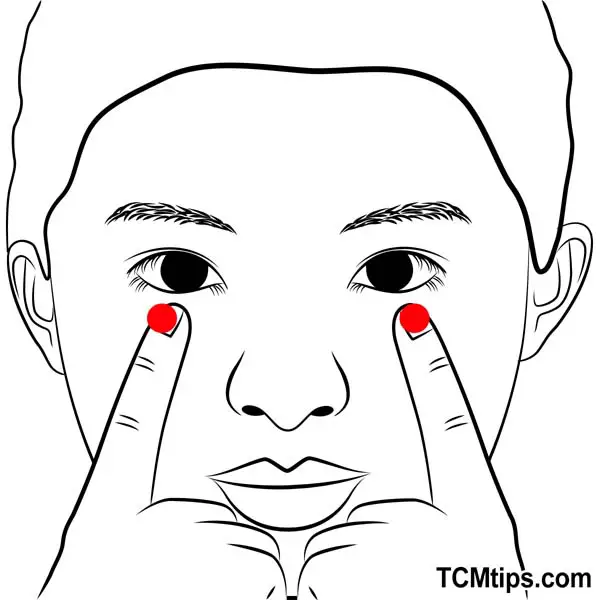
The health of our eyes connects to our intestines once again through the stomach channel acupuncture for eyes point 2. This point can help with dry eyes by relieving edema in the area that may inhibit proper tear formation or reduce tear quality.
In some ways, this acupressure point for dry eyes can be easier to activate since it is further from the eye. Looking straight forward, guide your finger from the space directly under your pupil down your cheek until it glides over your cheekbone and you feel a depression. It is approximately half a cun beneath St-1 directly under the eye, and you can apply pressure here without worrying about irritating or pressing into the eye.
You can also use this acupoint in acupressure for eye strain.


Try our Anti-Aging Gua Sha Tool designed to bring out your skin’s natural glow.
Best Gua Sha Product- Anti-Aging: The tool is designed to target 11 specific aging signs such as wrinkles and sagging skin. By following the 7-step routine, users can improve skin firmness and reduce fine lines naturally.
- Enhances Skincare Routine: It works effectively with serums and lotions, boosting absorption and efficacy of skincare products.
- Visible Skin Improvement: Users can expect a smoother complexion, reduced puffiness, and a more youthful appearance.
 P. Sze
P. Sze 